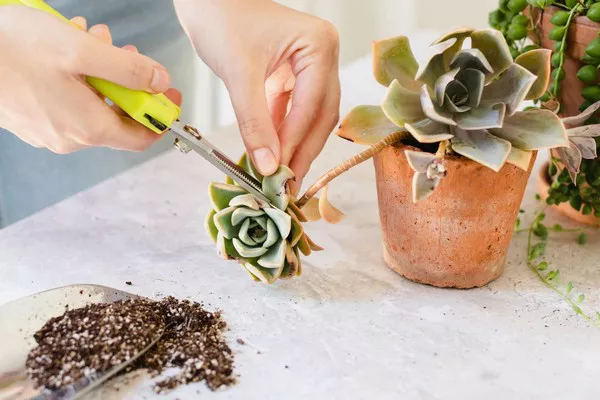Succulents have become a popular choice for both novice and experienced gardeners due to their unique appearance and minimal care requirements. These drought-resistant plants store water in their leaves, stems, or roots, making them well-suited for various environments. However, when it comes to newly planted succulents, proper watering is crucial to ensure their successful establishment and long-term health. In this article, we will delve into the essential factors to consider when determining how often you should water newly planted succulents.
Understanding Succulent Watering Needs
1. Adaptation Period
Newly planted succulents undergo a critical adaptation period. During this time, they are acclimating to their new surroundings and establishing their root systems. Proper watering practices are essential to support this process. Overwatering during this phase can lead to root rot, while underwatering can stunt growth and hinder establishment.
2. Water Storage Capacity
Succulents are equipped with specialized water storage tissues that enable them to survive in arid conditions. The ability to store water within their leaves, stems, or roots allows them to withstand drought and receive nutrients when water is scarce. Understanding the water storage capacity of different succulent varieties is key to determining their watering needs.
Factors Influencing Watering Frequency
1. Type of Succulent
Succulents encompass a wide range of species, each with unique water requirements. Some succulents, like Echeverias, have plump leaves capable of storing ample water, allowing them to thrive in less frequent watering. Others, such as Sedums, have thinner leaves and may require more frequent watering. Research the specific needs of the succulent species you’ve planted.
2. Season and Climate
The season and climate play a significant role in determining how often you should water newly planted succulents. During the growing season (spring and summer), succulents are more active and may require more water. In contrast, they enter a semi-dormant state during fall and winter, necessitating reduced watering to prevent excess moisture retention.
3. Soil Type and Drainage
Succulents thrive in well-draining soil that prevents water from accumulating around their roots. When planting succulents, choose a soil mix designed for cacti and succulents or create a mix that includes materials like perlite and sand to enhance drainage. Proper soil drainage helps prevent waterlogged roots, which can lead to rot.
Determining the Right Watering Schedule
1. Observation
Observing your succulents is a fundamental aspect of determining their watering needs. Monitor the condition of the leaves and the soil moisture. Over time, you’ll develop an understanding of how your specific succulents respond to different conditions.
2. Finger Test
A simple way to assess soil moisture is the finger test. Insert your finger about an inch into the soil near the base of the plant. If the soil feels dry at this depth, it’s time to water. If it still feels slightly moist, wait a few more days before checking again.
3. Watering Frequency
As a general guideline, newly planted succulents may require watering every 1 to 2 weeks during the growing season. However, this can vary widely based on the factors mentioned earlier. Always prioritize the moisture level of the soil over a fixed schedule. Remember that it’s better to underwater than to overwater.
Best Practices for Watering Succulents
1. Watering Technique
When watering succulents, use a gentle and targeted approach. Aim to water the soil directly around the base of the plant rather than overhead. This helps prevent water from accumulating in the rosettes of tightly packed succulents, which can promote rot.
2. Avoid Overhead Watering
Overhead watering, especially in humid environments, can lead to excess moisture on the leaves, making succulents susceptible to fungal diseases. Opt for bottom watering or using a watering can with a narrow spout to direct water where it’s needed.
3. Use the “Soak and Dry” Method
A popular method among succulent enthusiasts is the “soak and dry” technique. This involves thoroughly watering the soil until water drains out of the pot’s bottom, mimicking a natural rainfall. Allow the soil to dry out completely before watering again.
Common Watering Mistakes to Avoid
1. Overwatering
One of the most common mistakes when caring for succulents is overwatering. Excess moisture in the soil can lead to root rot and other fungal issues. Remember that succulents prefer to dry out between waterings.
2. Using the Wrong Container
Choosing an appropriate container is essential for proper drainage. Containers without drainage holes can trap excess water, increasing the risk of overwatering. Always opt for pots with drainage holes to ensure water can escape.
3. Neglecting Seasonal Adjustments
Succulents’ water requirements change with the seasons. Failing to adjust your watering routine based on the season can lead to problems. During winter, cut back on watering to accommodate their semi-dormant state.
Conclusion
In conclusion, mastering the art of watering newly planted succulents is a combination of understanding their unique characteristics and adapting your care routine to their needs. By considering factors such as the succulent type, climate, soil, and observing their response, you can develop a watering schedule that promotes healthy growth and prevents issues. Remember, patience and attentiveness are key when it comes to nurturing these charming and hardy plants. With the right watering approach, your succulents will thrive and bring beauty to your indoor or outdoor space.


